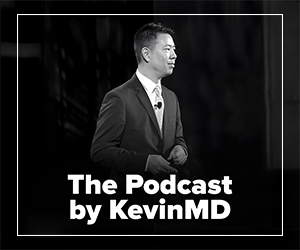While researching for my next book, I noticed a peculiar trend: Most news reports about suicide linked victims to mental illness. It is nearly always depression, multiple personality disorder, or more depression.
While it is true that personal mental illness and a family history of mental illness are often bonafide risk factors for suicide, they — collectively as mental health issues — are only one of many underlying causes of suicide that I found in my research. I had been pondering that, and the fact that when I was suicidal between November 2013 and May 2014, I had never been diagnosed with mental illness before or afterward.
I was, however, readily diagnosed with severe depression by the well-meaning U.S. captain that I was assigned to at Joint Base San Antonio, Lackland.
You see, what she had missed was the fact that even though I was suicidal, it was from mental anguish rather than mental illness. In July of 2000, my friend Ngozi, a second-year surgical resident, died from a single self-inflicted bullet wound to her head. She did not suffer from mental illness either, rather she had a severe case of mental anguish stemming from a culmination of a bad relationship, a stressful surgical residency, ostracization from her Nigerian family that she lived with back then in New York and a unique medical training and practicing system that ensures you are punished severely if and when you cry for help from what I call “overwhelmness.”
That beautiful Sunday morning while her beloved family was out at church, she did the unthinkable with one single shot. I can only imagine how lonely and possibly afraid she had been that morning. How utterly helpless she must have felt. How alone, how trapped, how much pan, how much anguish.
In my case, I had discovered that I owed the IRS money, thanks to my ex-husband and former practice manager, who messed up my beloved practice and left me alone to clean up the mess; after all, the practice had solely been in my name.
It was Thanksgiving week. I still remember it clearly: The morning air was crisp, the streets were less crowded, my car radio was playing a jazzy tune from 88.3 FM. I inserted my ATM card into the slot, waited a few minutes, and no money came out. Instead, my card politely returned to me.
I inserted it again, certain it was an error, already composing the words I would have for the operator when I called and complained about the machine being out of money on this most important week. Again, no money. That’s when I panicked, thinking only one thought — identity theft! I couldn’t wait to get home and tell the family.
As it turned out, I owed back corporate taxes to the IRS to the tune of $329,000! Somehow my ex-husband and former office manager had neglected to pay taxes for my practice, and since I was the sole owner and proprietor, the IRS took every single penny I owned from every single bank account that I owned. I felt all kinds of emotions during the days that followed. Mostly sad, but also anger, self-pity, pain, and enormous disappointment.
There was a lot of moping around and not eating. I was devastated. I became actively suicidal. The day I voiced my intentions to my wife, she calmly canceled all her appointments for the week and attended to my every need. If she was freaked out, she didn’t show it. She simply pleaded and offered options and suggestions. But she also took me to see the doctor, who promptly placed me on antidepressants with side effects of suicidal ideation.
So, here’s my dilemma.
There was no doubt that I was experiencing depression, reactive depression. No doubt, I was indeed suicidal.
However, after the third increase in the dose of my SSRI, and a change from one to another, my mood did not improve, my suicidality remained the same if not worse because my life’s stressors remained largely unchanged.
I would drive up and down the highway, looking for a chance to drive off of it, wondering, “what if?” I eventually weaned myself off the SSRI, and with the help of my extremely supportive spouse and family, I began my road rebuilding.
The more I was able to plan out my future, the better I felt. I eventually paid off a good chunk of the loan and filed bankruptcy, which is stressful enough, but because it was part of my plan to recovery, it didn’t hurt as badly. The lingering question I have is, what dose of antidepressants would it have taken to change my financial situation?
When the financial crisis of 2008 hit, a record 5,000 people died of suicide in the following weeks and months.
These were people who never had any mental illness recorded before the fact. So, how many milligrams of an SSRI would it have taken to “fix” their mental anguish?
When children and teens take their lives because of incessant bullying in schools or in classrooms, how many kinds of antidepressants would it take to change their reality?
Prescription antidepressant use has quadrupled in the past few years. Depression is often blamed for most suicides.
If antidepressants work, as Big Pharma would like us to believe, why are suicide rates on the rise across all races, ages, and works of life? Why are African American children and teens attempting and dying by suicide more than other races? Why do LGBTQ+ youth have the highest rates of suicide of all youth? Why do Native American/Alaskan youth have the highest rates of suicides of all youth? Why do Indigenous Australian youth lead the pack in suicides in that country? Why would a bright-eyed and bushy-tailed resident with a promising future suddenly kill herself during her second year in surgical residency?
Until we begin to look at other myriad reasons for suicide as bonafide players in the game, suicide rates will not come down any time soon.
I had the pleasure of interviewing Canadian emergency psychiatrist and suicidologist Tyler Black, MD, recently for an episode of my podcast, and he confirmed my suspicions. We must be very careful in throwing mental illness at every suicidal person. If someone has an overwhelming traumatic life event, a prescription of antidepressants might actually be more detrimental to them.
There is no doubt that mental illness (especially when undiagnosed or untreated) is a risk factor for suicide, but so are other factors. Only 46 percent of suicide deaths had mental health issues, and many were complicated by a lack of family support, substance abuse, or sudden life trauma.
We must find out what the underlying cause of the behavior is and tackle it specifically. Diagnosing everyone with mental illness actually worsens the stigma of both suicidal behavior and mental ill-health.
Uchenna Umeh is a pediatrician and can be reached at Teen Alive and on Facebook and YouTube.
Image credit: Shutterstock.com























![Preventing physician burnout before it begins in med school [PODCAST]](https://kevinmd.com/wp-content/uploads/The-Podcast-by-KevinMD-WideScreen-3000-px-4-190x100.jpg)


